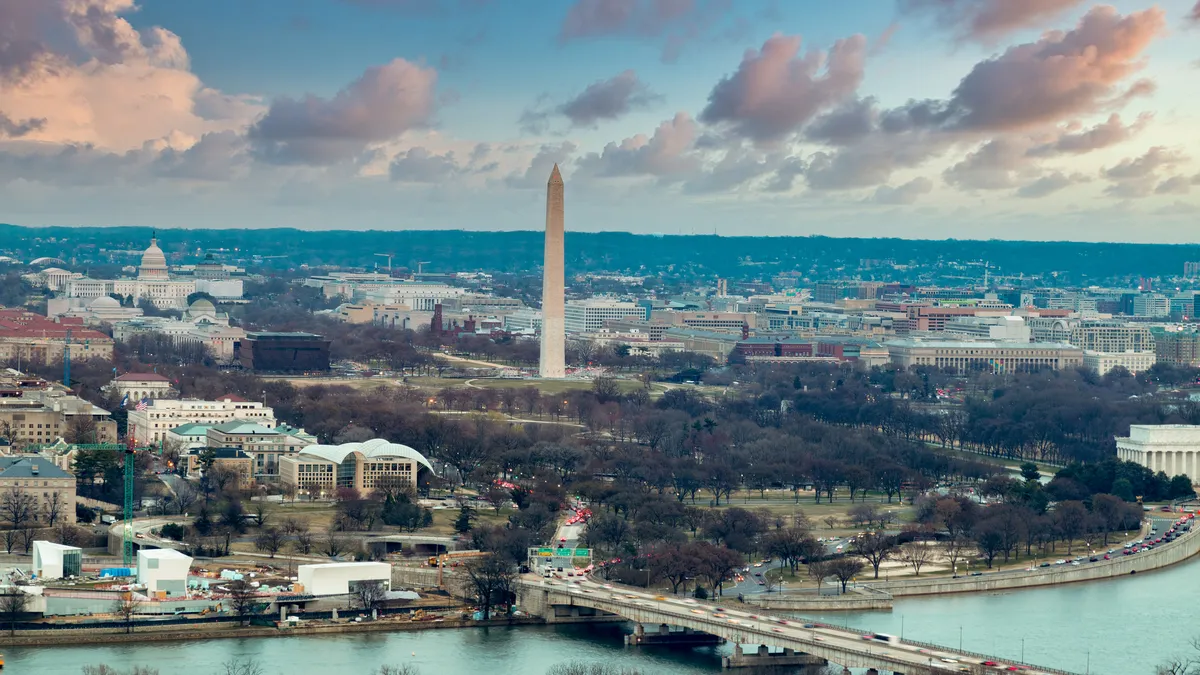Dive Brief:
- The District of Columbia is formally launching a mobility innovation district in its Southwest quadrant Thursday. The innovation district is a public-private partnership between the city’s Office of the Deputy Mayor for Planning and Economic Development and the Southwest Business Improvement District, supported by a $3 million grant.
- The multiyear project will experiment with innovative transportation services such as on-demand shuttles and electrification hubs, while also aiming to spur economic development and job creation.
- A key goal is for the Southwest Mobility Innovation District to serve as a model for transportation resources in other cities, especially with its unique focus on “ingrain[ing] solutions into the neighborhood economy,” said Brandon Pollak, senior principal at Cityfi, a smart city consultancy advising the Southwest BID. “We are showing how mobility connects with everything from food, to retail, to healthcare, to housing,” Pollak said.
Dive Insight:
Since the early 2000s, “innovation districts” have been cropping up in major cities across the U.S., serving as sites where public and private actors can work together to attract business, investment and development. These districts are often established in city areas ripe for revitalization, such as old industrial areas where people may already gather to live and work and where city institutions like universities or government offices are anchored.
Mobility innovation districts are focused primarily on demonstrating alternate modes of transportation to make it easier for residents and visitors to travel the city. Within these districts, selected companies may pilot solutions involving scooters, autonomous vehicles, electric vehicles, bicycles and more.
For example, Ford Motor Company in 2020 announced the development of a mobility innovation district in Detroit, a main component of which is a “mobility platform” where Ford and its partners will exhibit new transportation technologies like autonomous vehicles.
But according to Pollak, the Southwest MID will focus on more than just transportation. It aims to not only decrease transportation insecurity by increasing access to jobs and resources for underserved residents, but also to contribute to workforce and economic development, Pollak said. The MID will establish a shuttle service that shifts between fixed-route and on-demand service depending on need, in addition to investing in vehicle electrification that will create new job opportunities, Pollak said.
In D.C., Southwest encompasses neighborhoods of mixed-use housing, as well as part of the National Mall — a popular tourist spot — and its nearby federal buildings. The location is ideal for an “overlaying hub for policy [research and development],” Pollak added, as the MID could serve as a “living lab for policymakers” who visit Washington, D.C.










